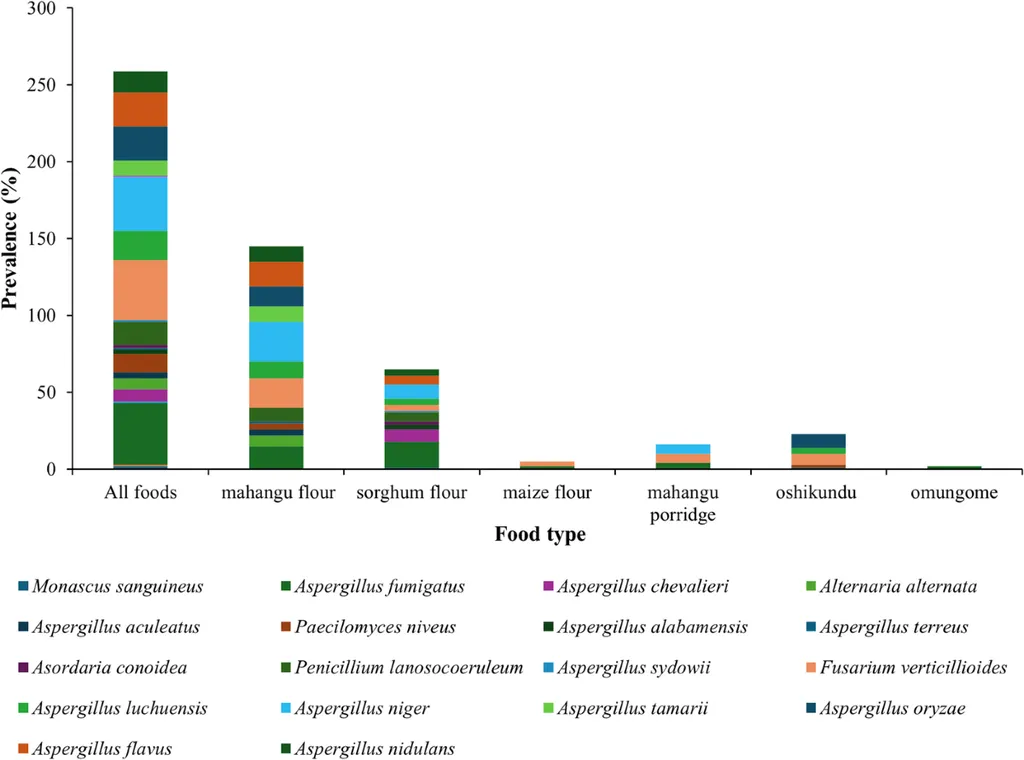In the heart of Namibia’s Oshana region, a silent threat lurks in the staple foods of the youngest and most vulnerable. A recent study published in *Discover Food* has shed light on the prevalence of fungal contamination in processed cereal foods consumed by children under five years old, raising significant food safety concerns and highlighting the urgent need for improved food handling and storage practices.
The research, led by Maria A. Angula from the Department of Human, Biological, and Translational Medical Sciences at the University of Namibia, revealed that cereal flour samples harbored a staggering 18 species of fungi, compared to just six species found in ready-to-eat foods. The most common culprits were Aspergillus (72%), Fusarium (15%), and Penicillium (6%). These fungi can produce mycotoxins, which pose serious health risks, particularly to young children.
Despite the high awareness among rural households—94% acknowledged fungal contamination in food, and 72% claimed to practice proper food handling techniques—the study found that the fungal contamination levels were still alarmingly high. This discrepancy suggests that there may be gaps in the understanding or implementation of effective food safety practices.
The commercial impacts of this research on the agriculture sector are significant. Fungal contamination not only poses health risks but also affects the quality and marketability of cereal products. For farmers and food processors, this study underscores the need for better storage and handling practices to reduce fungal infestation and mycotoxin accumulation. Implementing these practices can enhance the safety and quality of cereal products, ultimately benefiting both producers and consumers.
Maria A. Angula emphasized the importance of education in mitigating these risks. “There is an urgent need to educate rural farmers in Oshana on proper food handling and storage techniques to mitigate fungal and mycotoxin contamination risks and ensure food safety for children,” she stated. This call to action highlights the critical role of education and training in improving food safety standards.
The findings of this study could shape future developments in the field by prompting the development of targeted interventions and educational programs. By addressing the gaps in food handling and storage practices, the agriculture sector can enhance food safety, reduce health risks, and improve the overall quality of cereal products. This research serves as a wake-up call for stakeholders to take proactive measures to safeguard the health of the most vulnerable members of society.
As the agriculture sector continues to evolve, the insights gained from this study will be invaluable in guiding policy decisions and implementing best practices. By prioritizing food safety and quality, the sector can ensure a healthier future for all.

